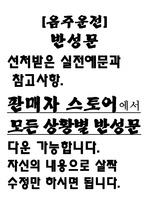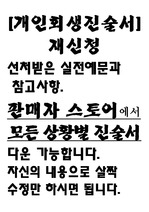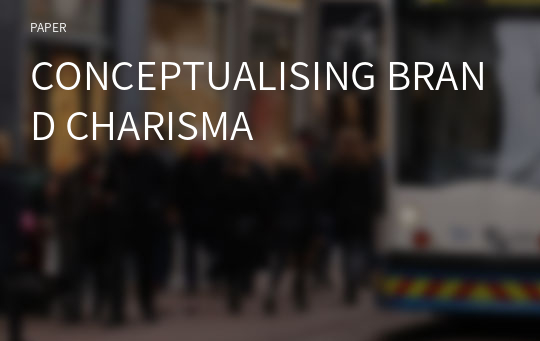CONCEPTUALISING BRAND CHARISMA
* 본 문서는 배포용으로 복사 및 편집이 불가합니다.
서지정보
ㆍ발행기관 : 글로벌지식마케팅경영학회(GFMC)
ㆍ수록지정보 : GFMC Session1
ㆍ저자명 : Siobhan Hatton-Jones, Min Teah, Ian Phau
ㆍ저자명 : Siobhan Hatton-Jones, Min Teah, Ian Phau
영어 초록
The conceptualisation of brand charisma is multi-disciplinary, using luxury branding context. This research adds value by making significant contributions by extending and building theory; holds managerial implications for policymakers and brand managers in shaping and communicating brand charisma; additionally to develop a research framework and scale to measure brand charisma.Introduction
Charisma in grounded in anthropology and sociology; which has been divided into three key definitions. At the root of the sociological construct it is associated with a leader who generates extremes of loyalty and motivation among followers (Smothers 1993).The primary reason charisma is used, historically speaking, is to gain control over a group of people, and create a strong following (Weber 1946; Dow 1968; Smothers 1993). Research has demonstrated that charismatic leaders are more likely to effect and motivate individuals (followers) beyond expectations and command extremes of attachments (Bass 1985, 1988; Conger 1988; House et al 1988). This implies that charisma can inspire devotion to a leader that surpasses mere loyalty (Spencer 1973; Dow 1968); an irrational bond and inspiration between leader and follower (Marcus, 1961). As competition continues to grow within the luxury sector brand resonance is increasingly important as some of the effects include: higher loyalty to the brand, increased number of followers, ease to move consumers, development and diffusion of new products and greater consumer accommodation for the brand. In recent years, as brands try to become more ‘accessible’ to consumers and provide them with more brand experiences online we see the brand become diluted and evidence of brand fatigue set in (Business Insider 2015). Brand experience has been conceptualised as ‘sensations, feelings, cognitions, and behavioural responses evoked by brand related stimuli’ (Brakus et al 2009); which are often subjective and internal responses (Brakus et al 2009). Most experiences occur directly when consumers shop, buy, and consume products. Experiences can also occur indirectly—for example, when consumers are exposed to advertising and marketing communications, including Web sites. As a majority of luxury brand consumers are deemed to be loyal to the brand, it is important to capitalise on these followers (Levitt 1975) to further foster brand- follower- consumer engagement. Pastor et al (2007) were able to demonstrate that followers’ emotional responses have a significant influence on charismatic leaders; where followers experienced higher levels of arousal, they were more likely to rate leaders as charismatic.
Brands can have charisma through social construction, compelling emotional associations that build on imagery, symbolism and prestige. Thus, it leads to extraordinary levels of motivation and attachment- achieving brand resonance. Thus, followers and consumers will view the brand as being sacred, and imbued with deeply significant and metaphorical meaning (Smothers 1993). It is evident that brand charisma allows the brand to exercise control and influence over a following or group of consumers. As brand charisma serves as a motivational tool to inspire and communicate their brand vision to followers, it allows the charisma to remain unique and rare (only for those in the community). While the ability to attain this brand charisma is always kept out of reach for everyday consumers, in order to motivate them to perform and engage with the brand beyond expectation. From the followers perspective, charisma is used to communicate or signal to others their social belonging and identity to a particular community.
The presence therefore of brand charisma serves as a guide, or vision, of the brand that is aspirational and inspirational for the followers, with the promise of the ‘dream’ being attainable by belonging to this group. It is interesting, and pivotal to note that brand charisma is not like a normal brand- follower relationship, but rather a unique bond that is value laden, ongoing and influential on perceptions.
Some key characteristics have been used in forming a conceptual definition of brand charisma, form both the brand and follower perspective. These include “exercise diffuse and intense influence over the beliefs, values, behaviour and performance of others through own behaviour and example” (Dow 1969; House et al 1991; Shils 1965); “unique connection between leader and follower that can account for extraordinary performance and accomplishments of individuals, work groups, units and organisations” (Yammarino et al 1992; Bensman and Givant; Conger and Kanungo 1998); “transcendent from the ordinary” ; “the process is both parallel and analogous process…both change meaning and perceived value” (Weber 1922; 1966; Levitt 1975; Smothers 1993).
Drawing from the above emerging characteristics, which is reflective of the literature, a tentative conceptual definition of brand charisma has been proposed below:
“The ability to articulate the brand vision, elicit a positive emotional response by its audience or followers that is characterised by extremes of motivational attachment”
Through a content analysis of luxury brands and a rigorous literature review, has identified ‘core’ and ‘supplementary’ characteristics for the presence of brand charisma, which is aimed to be further explored. The Core characteristics of brand charisma can be thought of as the source of the brands charismatic aura and this must be present for charismatic brands; while the supplementary characteristics are not crucial or inherent to every charismatic brand.
Research Gaps
Based on the extended literature review, the following key gaps have been identified:
1. To the best of my knowledge there has been no conceptualisation of brand charisma in marketing and branding (e.g. Smothers 1993; Dion and Arnould 2011)
a. Lack of working definition for brand charisma and lack of research framework and scale to measure brand charisma
2. Diminutive studies have used the concept of charisma in luxury branding or marketing
3. Assessing whether brand charisma should be implemented or is present across various ‘categories’ of luxury (e.g. inaccessible vs. affordableluxury)
4. Past studies have not addressed the influence of brand charisma on consumer emotions and perceptions (e.g. Dion and Arnould 2011)
Based on the above research gaps the following research questions have been developed:
RQ1: What is brand charisma?
RQ2: How does the presence of brand charisma influence brand resonance?
RQ3: Does the presence of brand charisma differ between affordable and inaccessible luxury?
RQ4: What are the emotional responses elicited by the presence of brand charisma?
Theoretical Framework and Hypotheses Development
Stimulus- Organism- Response (S-O-R) model is the underpinning theoretical framework for the proposed research (Mehrabian and Russell 1974). The S-O-R model has been widely used in retail environment (e.g. Buckley 1991; Chang et al. 2011) and to study different types of involvement (Arora 1982). Based on the S-O-R model, the stimulus is defined as any external stimuli that influence the internal states of an individual which consist of both environmental influence and marketing mix variable (Bagozzi 1978; Eroglu et al. 2003). In this proposed research the presence of brand charisma will serve as the external stimuli that influence consumers’ perception of luxury and brand affect. The perception of luxury is affected by brand related stimuli and imagery (Brakus et al 2009), which include but not limited to, elements such as; brand name, products sold and communications. Organism is defined as the internal emotional response which influences the relationship between external stimuli and the behavioural response (Bagozzi 1978). In this study, perception of luxury and brand affect will serve as the internal consumer responses (sensations, feelings and cognitions) which is degree to which a consumer is effected via the environment, being either direct or indirect, through the 5 senses (sensory appeal). In this study, the resulting response will be brand resonance, as this extends beyond loyalty and encapsulates a brand follower or consumer to willingly and proactively engage in word of mouth, have deep attachment or connection with the brand, feel proud of association with this brand and community followers (Keller 2001).
Supporting Theory
As brand charisma is a set of activities to capture the distinctive brand essence, which creates a strong sensory appeal compelling consumers to strongly advocate for the brand; we see the transfer of charisma onto the brand through concepts such as brand experience (consumer touchpoints) and brand resonance (brand- follower relationships). Thus, the Law of Contagion is the underpinning theory to support the effects of brand charisma (Frazer 1959, Mauss 1972; Tylor 1974). The Law of Contagion for the proposed research focuses on sympathetic magic, namely the effects of contagion, which deem that whatever is done to a material object will affect equally the person with whom the object was once in contact, whether it formed part of his body or not (Frazer 1889). This can be extended to brand activities such as communications, Furthermore, Spillover Effects, is the secondary effect
of brand charisma as we are assessing the ‘spillover’ of charisma onto the brand and the effects it will have on the proposed relationships (Simonin and Ruth 1998) between perception of luxury, brand affect and brand resonance.
Charismatic Leadership Theory (Weber [1922] 1978) has been deemed ‘transformational’, ‘visionary’ or ‘inspirational’ throughout the organisational literature (e.g. House 1977; Conger and Kanungo 1988). These theories focus on exceptional leaders who have extraordinary effects on their followers and larger social systems (Shamir et al 1993); hence leaders transform the needs, desires, values and aspirations of followers from self- interest to collective interest. This is demonstrated through brand communities, and kinship, as followers become highly committed to the leader’s mission and often perform above and beyond what is expected of them. Charismatic Leadership is further demonstrated through the strong relationship between follower and brand by; emotional and motivational arousal through brand behaviour, nonverbal communications, visionary and inspirational messages and ideological appeals. Therefore, in layman terms, the more charismatic brands are, the more likely they are to experience overall higher brand resonance.
Brand resonance is the outcome variable proposed for this research. Brand resonance aims to capitalise on previously acquired loyalty and equity (Huang et al 2014); thus brands add value to consumer goods by supplying meaning, and consumers like brands because they package meaning derived from interaction with the brand (Biel 1970). This can further be explained by an enduring sense of communal kinship and affiliation; which sees followers of the brand invest personal resources in order to stay connected (Keller 2001; Huang et al 2014). Social Identification Theory (Tafjel and Turner 1985) is used to support the outcome variable of brand resonance, as one of the primary drivers of brand resonance is that followers draw some association or similarity between themselves and the brand. Social Identification Theory is also closely linked to Charismatic Leadership Theory (Shamir et al 1993) (discussed below), as brand behaviours define the boundaries of the collectivity to emphasise its distinctiveness, prestige and competition with other groups. Such leader behaviour increases the salience of the collective identity in members’ self- concepts (Ashforth and Mael 1989); therefore, identification with the leader (brand) as it is perceived via a representative character (brand activities).
Based on the above, we postulate the following:
H1: High Presence of brand charisma will lead to high perception of luxury
H2: High perception of luxury will lead to high brand affect
H3: High presence of brand charisma will lead to high brand affect
H4: Perception of luxury mediates the relationship between presence of brand charisma and brand affect
H5: High presence of brand affect will lead to high brand resonance
Methodology
My research will encompass a mixed methods approach and be split into three predominant phases. The first being scale development, followed by stimulus development and finally the main study. The mixed method offers greater depth and breadth of understanding and corroboration (Johnson et al 2007) and is in line with the underlying pragmatist paradigm of this study (Johnson and Onwuegbzie 2004). A convenience sample will be used comprising of consumer panel data. The sampling frame will consist of everyday consumers, as these consumers need not be buyers of luxury brands.
Phase 1: Scale Development
The scale development phase will use methods by Churchill (1979) and Devillis (1991). The purification, CFA, EFA and validity will be undertaken to refine and test the scale. The approximate sample for this phase is approximately 200 respondents.
Phase 2: Stimulus Development
This phase will use expert panel to select the most appropriate charismatic brand and stimulus to use for this research. The potential brands of interest, thus far guided by literature, are; Hermes, Chanel, Dolce & Gabanna, Gucci, Louis Vuitton, Valentino and Oscar de la Renta. The sample size of the expert panel will comprise of approximately 15-30 respondents (Endacott et al 1999; Keeney et al 2010).
Phase 3: Main Study
This phase will comprise of the self-administered questionnaire, with all sclaes measured on a 7- pinot Likert scale. With the use of an embedded stimulus, using consumer panel data with the sample size of approximately 800. Validation study will be included using psycho-physiological equipment available in the School of Marketing to validate the brand charisma scale; and to test whether there is positive emotions elicited that can be attributed to the charisma of the brand. This sample will consist of approximately 120, in line with recommended JCR guidelines.
Significance
Theoretical Contributions
• Building and extending the current branding literature by conceptualising brand charisma, which has only been attempted in fragments throughout the literature.
•Developing a scale to measure brand charisma in a luxury context. Until now, a brand charisma scale demonstrating rigour and validation is lacking within the literature
• Empirically evaluating the developed brand charisma scale, validating the applicability and the moderating effects of brand charisma on the relationships between perception of luxury, brand experience and brand resonance.
Methodological Contributions
• This study will develop a brand charisma scale, employing psychometric properties to demonstrate reliability and validity.
• This scale will then be used to further develop a Brand Charisma Index
Managerial Contributions
This study aims to provide a blueprint for luxury brand managers, owners and policymakers on:
• How to use brand charisma to grow brand community, brand attachment and brand engagement; vis-a – vis the brand.
• Build stronger brands, that are resilient to market changes and fluctuation
• Segmentation process to identify consumers with high brand resonance
To identify what cues of brand charisma should be present for brand content and campaigns and how to augment these
• For inaccessible and affordable luxury offerings, identify whether the presence of brand charisma should be used for both.
Provide insights how the presence of brand charisma can impact and influence consumer’s perceptions and emotional responses.
참고 자료
없음"GFMC Session1"의 다른 논문
 FAST AND SLOW FASHION BRANDS IN DEVELOPING SUSTAINABLE ..6페이지
FAST AND SLOW FASHION BRANDS IN DEVELOPING SUSTAINABLE ..6페이지 “WHAT IF A CELEBRITY AND A BRAND CO-CREATE A NEW COLLEC..7페이지
“WHAT IF A CELEBRITY AND A BRAND CO-CREATE A NEW COLLEC..7페이지 THE INSTAGRAM’S STRATEGY IN ENGAGING THE CUSTOMER’S LOY..3페이지
THE INSTAGRAM’S STRATEGY IN ENGAGING THE CUSTOMER’S LOY..3페이지 THE PARTICULARITIES OF NEW PRODUCT DEVELOPMENT IN THE T..5페이지
THE PARTICULARITIES OF NEW PRODUCT DEVELOPMENT IN THE T..5페이지 THE LONE CHOCOLATE BAR: THE INFLUENCE OF PERCEIVED SCAR..6페이지
THE LONE CHOCOLATE BAR: THE INFLUENCE OF PERCEIVED SCAR..6페이지 ADS AS WORKS OF ART: MEASURING ADVERTISING IMMERSION3페이지
ADS AS WORKS OF ART: MEASURING ADVERTISING IMMERSION3페이지 ECONOMIES OF SMALL: NICHE STRATEGIES AND SUCCESS FACTOR..8페이지
ECONOMIES OF SMALL: NICHE STRATEGIES AND SUCCESS FACTOR..8페이지 THE INFLUENCE OF ONLINE CUSTOMER REVIEWS ON RETAILERS' ..6페이지
THE INFLUENCE OF ONLINE CUSTOMER REVIEWS ON RETAILERS' ..6페이지 IS THE ARTIFICATION PROCESS PERCEIVED BY FINAL CONSUMER..6페이지
IS THE ARTIFICATION PROCESS PERCEIVED BY FINAL CONSUMER..6페이지 THE ODD EVEN PRICE PARADOX IN THE FASHION LUXURY SECTOR6페이지
THE ODD EVEN PRICE PARADOX IN THE FASHION LUXURY SECTOR6페이지

























